The M16 can be customized and modernized until it’s hardly recognizable. But real improvement happens inside the gun, to enhance accuracy, control, and reliability.
By David Lake
The M16 is an American icon. It was the first gun many of my generation could identify by make and model. When we were kids we saw it on TV in the hands of rough men like Lee Marvin and Charles Bronson. So now we’re adults, and we all still want one; lucky few of us may have one. Some of us have carried it into battle. For some, the M16 is a hobby; for others it’s a job. This rifle has spawned something akin to a religion; religion being defined as a collection of beliefs, culture, and views that relate humanity to an order of existence. A religion has narratives, symbols, and history. That all definitely applies to what the M16 and its progeny have become.
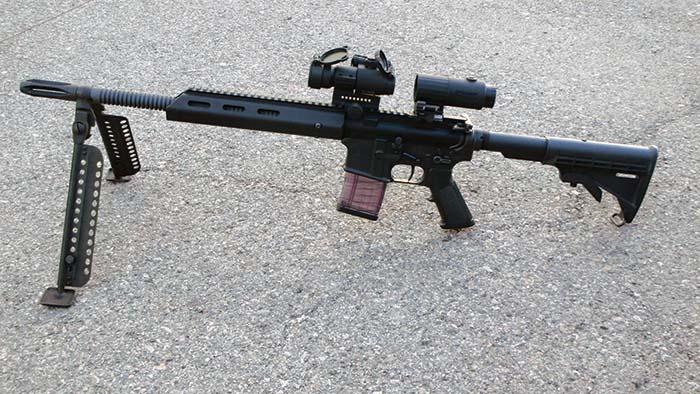
The M16 has been diffused into what is now the commercial empire of the AR-15. The legal restrictions and colossal expense of owning a legally registered and transferable fully-automatic M16 turns most individuals away from the idea or possibility. However, there are a large number of people in our nation that do own and use the M16 for legal recreational purposes. These rifles can cost between 10 and 30 thousand dollars; depending on the brand and what’s attached to it. A stripped, off-brand lower receiver comes relatively cheaply. A vintage unfired Colt demands top dollar. The AR-15 family enjoys access to a sea of accessories and upgrades. The M16 gets less attention to its specific needs, as the market is comparatively small, but many interchange. The ’15 and ’16 rifles are similar, but all internal parts are not interchangeable. There are a few parts unique to the M16 that include the fire control, bolt carrier, selector, and purpose-built buffers and rate reducers.
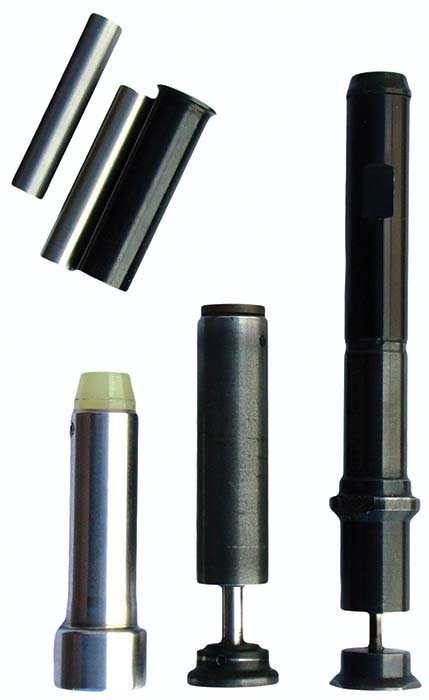
The importance of modern upgrades to the M16 cannot be overstated. Granted, full auto accuracy largely depends on the skill of the shooter. Even then, the term “accuracy” loosely applies; it is better described as “area of effect” or “beaten zone.” Machine guns are expected to deliver poor accuracy; this is what we’re taught anyway. But consider this; every full auto burst begins with a trigger pull, and the effect of that burst on target begins with a single bullet. During full-auto fire, the gun may become hard to control, but that first bullet can and should be depended on to hit its target. All that is required is a crisp, fast trigger instead of the heavy and creepy OEM military unit. The advantage to a premium trigger in the M16 is easy to demonstrate. One must shoot some short bursts at a target with military trigger and then with a premium trigger pack. The group size will be the same, but more often than not, you’ll notice better group placement with the premium trigger. The gun is not being jerked or otherwise affected as much with the improved trigger pull. The effect of the aftermarket upgraded trigger becomes even more defined as the cyclic rate of the M16 is reduced. A premium trigger will have reduced pull weight, take-up and travel. This means the trigger can be actuated faster. This also means that there is a greater possibility of pulling and releasing the trigger more quickly. In turn, it is easier for the shooter to fire shorter and more controlled bursts; less time in full-auto; which translates into smaller groups and better hits on target. When we fitted these triggers to a 9mm submachine gun, due to the added weight of the blowback system and reduced fire rate, we were able to send single rounds to target, reliably and repeatedly; while the selector was set to “auto.” It is advantageous to be able to fire single shots or bursts or continuous fire without having to actuate the selector lever. This takes time and a bit of attention from the operator. In the case of security, military, or law enforcement personnel, time and thought spent moving the selector can mean life or death. There exists a trigger design, known as a “progressive trigger” that allows for selective fire mode based on how far the trigger is pulled. It’s an old development; attributed to the Germans in the 1940s. If the operator pulls the trigger to a first stage, the gun fires in semi-auto. As the operator pulls the trigger through to a second stage, the gun will commence full-auto fire. Some examples today are the FN P90 and Steyr AUG. High stress situations demand simplicity. Fewer moving parts and less to think about are good things. Though the M16 cannot be redesigned to use a true progressive trigger mechanism, a quality aftermarket fire control can achieve nearly the same result. We compared the M16 triggers made by Geissele and POF and both performed perfectly. The POF operates like a digital on/off switch; the Geissele offers better feel and feedback. The POF is a single contained “trigger pack” while the Geissele is of a conventional 2-piece design. There is a foreseeable advantage to the unitized construction of the POF unit. As the trigger pins pass through the receiver to retain the trigger housing, both the trigger housing and receiver are mutually reinforced; reducing the possibility that the trigger pin holes in the receiver wear or stretch under hard use. Remember that the M16 receiver is quite valuable. They are not easily repaired or replaced. There are some M16 receivers suffering from worn trigger pin holes; this ailment can conceivably cause poor sear or disconnector engagement, and result in failure, stoppage, or even a “runaway” machine gun.
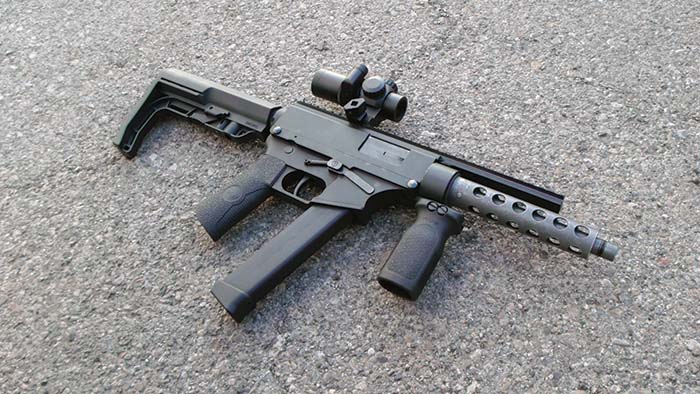
GEDSC DIGITAL CAMERA 
GEDSC DIGITAL CAMERA
Once an M16 is firing in full-auto fashion, the recoil forces of each shot fired are cumulative. An inexperienced or misinformed shooter may not be able to maintain control of the weapon. Even with proper education on how to handle a machine gun, the M16 leaves room for improvement. The idea of a “rate reducer” is sound technology. Fewer shots fired per time interval equals less energy transfer per same time interval. These rate reducers usually take the form of and replace the existing buffer. They may operate by two principles; some are designed to collapse on themselves, some merely add more weight to the reciprocating mass. The collapsing variety utilizes hydraulics, pneumatics, or a simple metal spring to slow, retard or delay the sudden stop and reversal of motion of the reciprocating mass. The rate reducers that work by adding mass are better suited to blowback guns like M16s in pistol calibers. A heavier buffer has greater inertia, and effectively requires more energy to overcome that inertia. As the fired cartridge builds energy, it takes more time to build the energy required to overcome the increased inertia of the reciprocating mass. As the buffer comes to a stop and reverses direction at the end of the recoil stroke it is, for a moment, motionless. Once again, more time is required as the recoil spring applies force to set the mass in motion forward back into battery. Some of these rate reducing devices use a combination of these methods of function. Both methods effectively reduce the recoil impulse of the gun. The collapsing buffers spread the recoil impulse over time, or prolong the slowing and reversal of the recoiling mass. The heavy buffers essentially spend or convert recoil energy. As energy must either be conserved or transferred more energy is required to move a heavier buffer, so less energy remains to be perceived as recoil. Specifics aside, you’ll save ammunition with one of these fit to your M16. That’s enough reason to use one. (Editor’s note: It is also important to note that once you change something in a balanced system, it is no longer “balanced” and there may be side effects to weight increases on components. Symptoms of this may appear with short bolt stroke feed failures or failure to return to battery if the weapon is fired upward or downward).
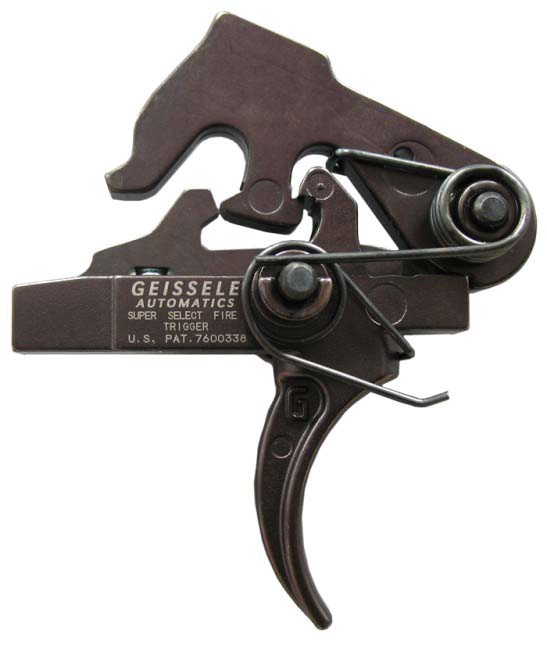
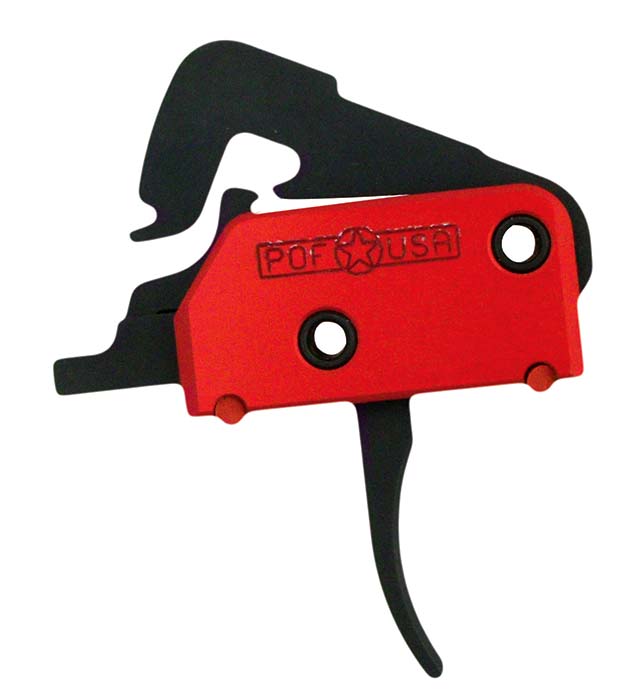
GEDSC DIGITAL CAMERA
The selector on a machine gun must not be neglected either. This control surface should be easy and instinctive to operate. The choice to change mode-of-fire should be the operators: the gun must only switch from semi to full or vice-versa at the operator’s command. And it should operate positively without hitch or hesitation. The only aftermarket upgraded selector for the M16 we found that was worth a mention was from Battle Arms Development (BAD). Their selector levers are available as a kit, offering 6 different modular lever controls to be affixed to the receiver. The operator can tailor his fire control to fit his hand and shooting style. The BAD selector offers low and high profile, long and short paddles, and are available in a variety of colors – some of the bright ones allow for visual confirmation of the weapon’s condition. Additionally, the BAD selectors can be configured as ambidextrous or single side operation. Quality of workmanship and flawless operation are hallmarks of every product from Battle Arms. Also worthy of mention is BAD’s upcoming SAFE/AUTO selector. It’s only a 2-position selector as it offers no semi-auto setting. It was designed specifically for defense and law-enforcement application to minimize an operator’s “time-to-fire” from a safe condition. It is also very relevant to residents of Connecticut, where a “select fire” gun is illegal; but laws do not overtly prohibit fully-automatic weapons (machine guns).
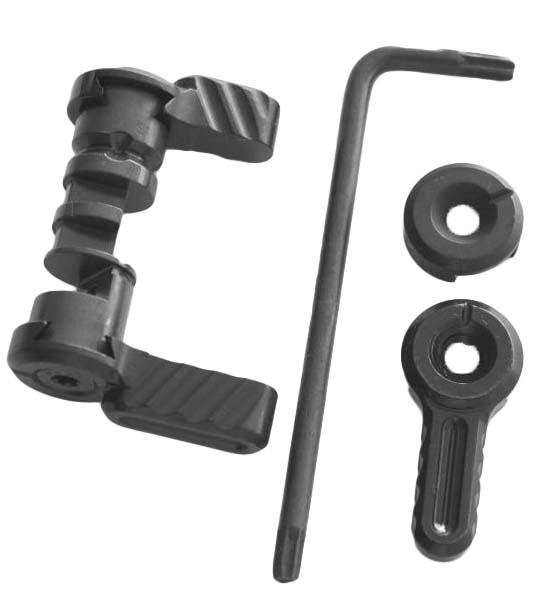
If you choose to apply these three technologies to your M16, it will cost you approximately $500. That’s a drop in the bucket compared to what your M16 cost you to purchase and even less in comparison to your ammunition bill. The fact is that these simple upgrades should be considered required equipment. Reduced fire rate, better trigger and shot control, and reliable and fast fire control are all desirable traits. If your M16 is still configured as it was at its birth, it’s time for some evolution to take place. The M16 deserves some twenty-first century treatments.
| This article first appeared in Small Arms Review V19N1 (January 2015) |











